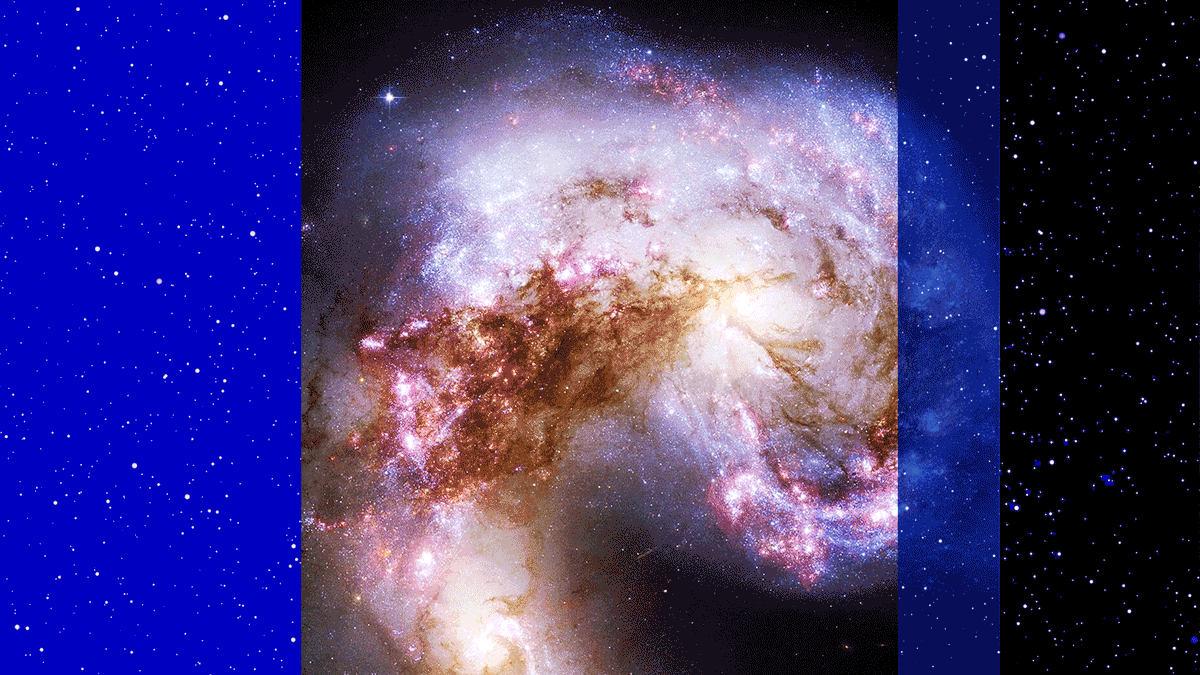Astronomers Discover a Strangely Pitch-Black Exoplanet

You may recall when we told you about an exceptionally light-absorbing coating called “Vantablack” about a year ago. The stuff is so weirdly black — it absorbs 99.965% of the light that hits it — your senses don’t know what to do with it. Now NASA’s Hubble Space Telescope has discovered an exoplanet that’s nearly as dark 1.400 light years away in the constellation Auriga. Soaking up 94% of visible light it encounters, it’s called “WASP-12b,” and it’s huge: Twice the size of our solar system’s Jupiter. Lead researcher Taylor Bell of McGill University and the Institute for Research on Exoplanets in Montreal says, “The measured albedo of WASP-12b is 0.064 at most. This is an extremely low value, making the planet darker than fresh asphalt!” (Albedo is a measure of reflectance.) It’s a reminder of how much we have yet to learn, even here in our own stellar neighborhood.

Jupiter, Gemini, Auriga and the Milky Way (DEREK ΣΩΚΡΆΤΗΣ FINCH)
As a gaseous planet orbiting close to its sun, WASP-12b is a so-called “hot Jupiter.” Though most hot Jupiters reflect about 40% of their starlight, “There are other hot Jupiters that have been found to be remarkably black, but they are much cooler than WASP-12b,” explains Bell. “For those planets, it is suggested that things like clouds and alkali metals are the reason for the absorption of light, but those don’t work for WASP-12b because it is so incredibly hot,”
This has to do with WASP-12b’s proximity to its sun-like star, WASP-12A. WASP-12b is only about two million miles away from WASP-12A, close enough that the star’s gravitational pull has stretched WASP-12b into an egg shape. And it’s extremely hot: about 4,600 degrees Fahrenheit on the side facing the star. The dark side of WASP-12b is a relatively balmy 2,600 degrees, “cool” enough for the formation of water vapor and clouds. During the day, though, the planet is an inferno, vaporizing any molecules that might form reflecting clouds. Instead, according to NASA, the light goes deep into the atmosphere where it’s absorbed by hydrogen atoms and turned into heat.
There’s another amazing thing about WASP-12b: The speed at which the giant body orbits WASP-12A. It completes a circuit of its star in just a single earth day. Picture something so massive moving so quickly.
WASP-12b was first discovered in 2008, and has been studied since then by a few telescopes in addition to the Hubble, including NASA’s Spitzer Space Telescope and Chandra X-Ray Observatory. Earlier research by Hubble’s Cosmic Origins Spectrograph (COS) found the planet to be slowly shrinking.

(NASA)
The new discovery was made by the Hubble’s Imaging Spectrograph (STIS) as it attempted to capture a subtle dimming in reflected light as WASP-12b passed behind WASP-12 — this would allow astronomers to measure the amount of light being reflected by the planet’s surface. They got more than they bargained for, though: No reflected light from WASP-12b was detected at all. “We did not expect to find such a dark exoplanet,” says Bell.





